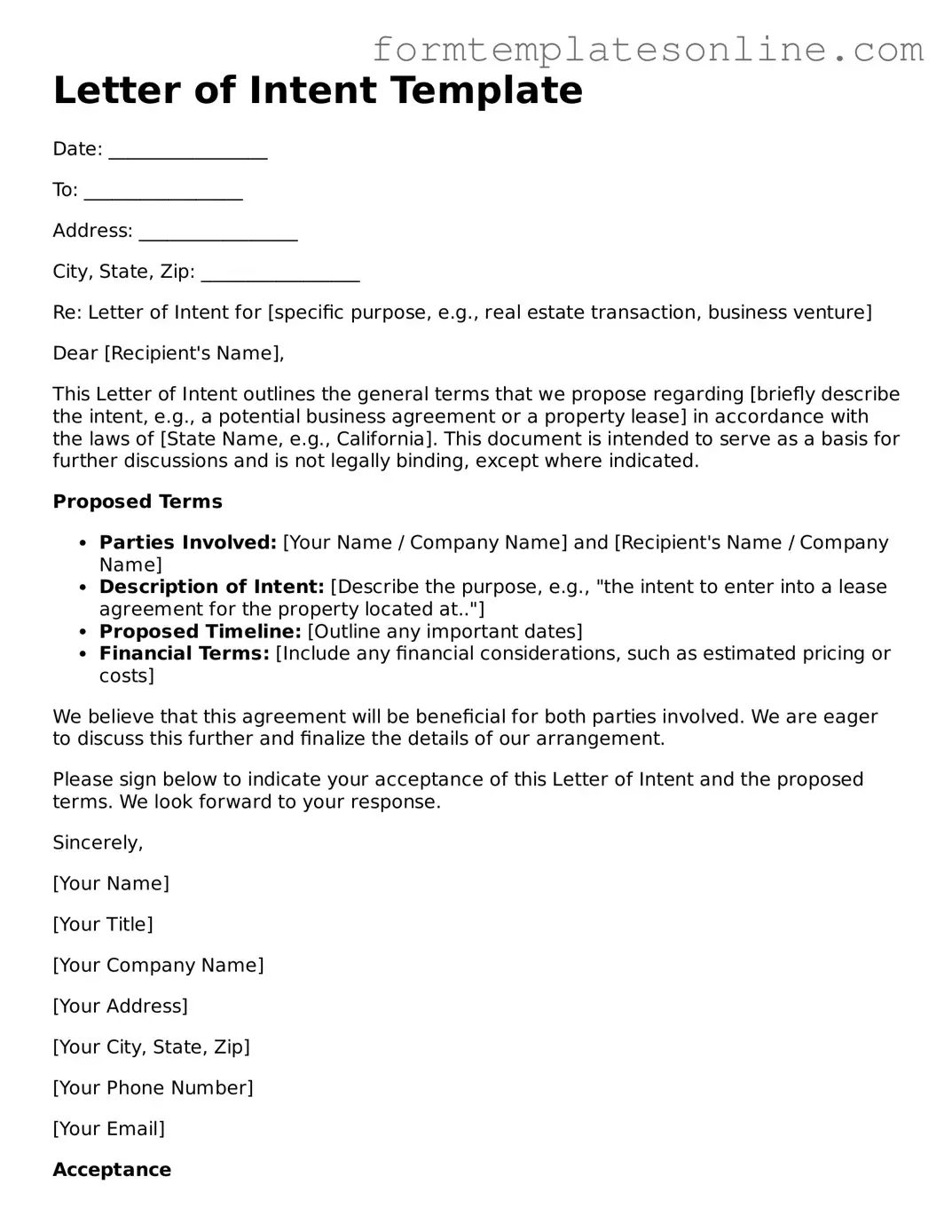Letter of Intent Template
Date: _________________
To: _________________
Address: _________________
City, State, Zip: _________________
Re: Letter of Intent for [specific purpose, e.g., real estate transaction, business venture]
Dear [Recipient's Name],
This Letter of Intent outlines the general terms that we propose regarding [briefly describe the intent, e.g., a potential business agreement or a property lease] in accordance with the laws of [State Name, e.g., California]. This document is intended to serve as a basis for further discussions and is not legally binding, except where indicated.
Proposed Terms
- Parties Involved: [Your Name / Company Name] and [Recipient's Name / Company Name]
- Description of Intent: [Describe the purpose, e.g., "the intent to enter into a lease agreement for the property located at.."]
- Proposed Timeline: [Outline any important dates]
- Financial Terms: [Include any financial considerations, such as estimated pricing or costs]
We believe that this agreement will be beneficial for both parties involved. We are eager to discuss this further and finalize the details of our arrangement.
Please sign below to indicate your acceptance of this Letter of Intent and the proposed terms. We look forward to your response.
Sincerely,
[Your Name]
[Your Title]
[Your Company Name]
[Your Address]
[Your City, State, Zip]
[Your Phone Number]
[Your Email]
Acceptance
By signing below, the undersigned acknowledges and accepts the terms outlined in this Letter of Intent:
_________________________
[Recipient's Name / Title]
Date: _________________
